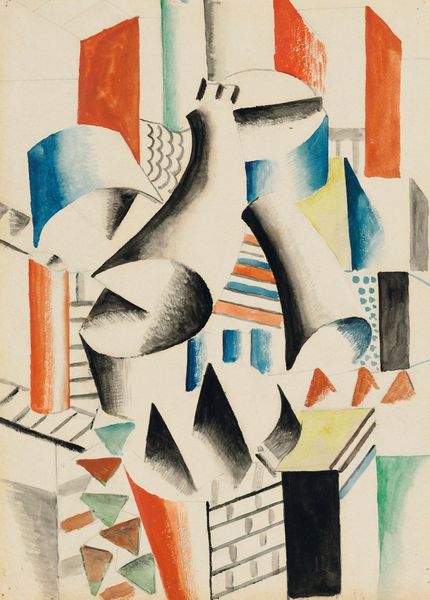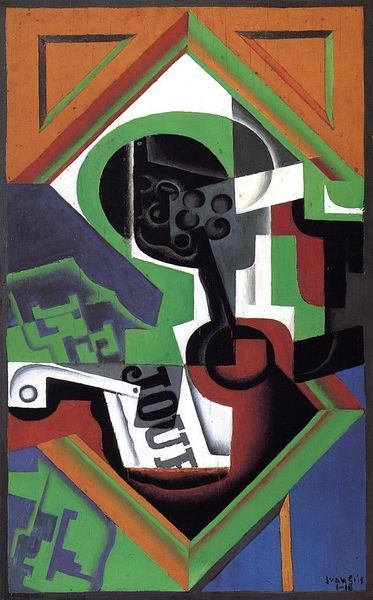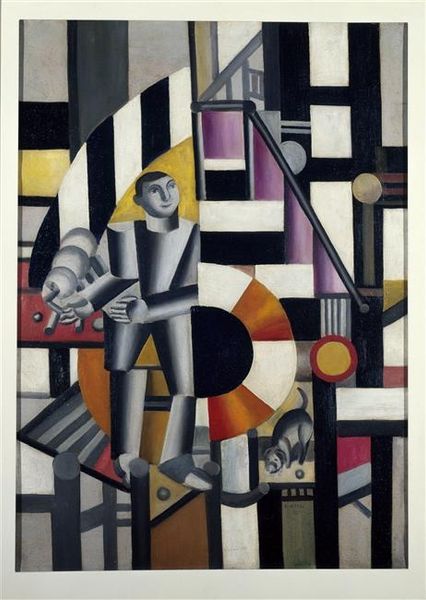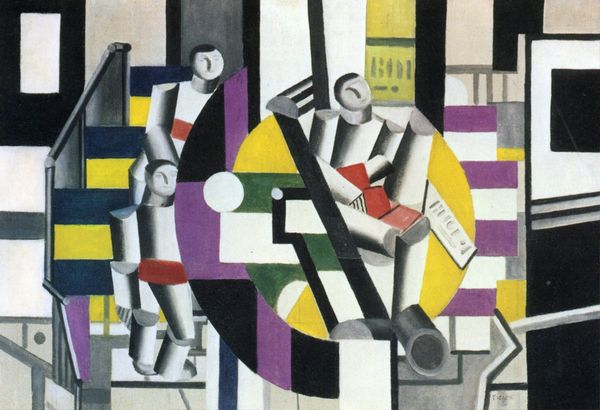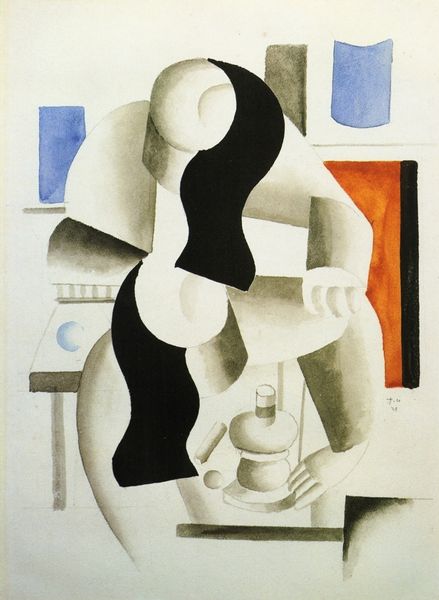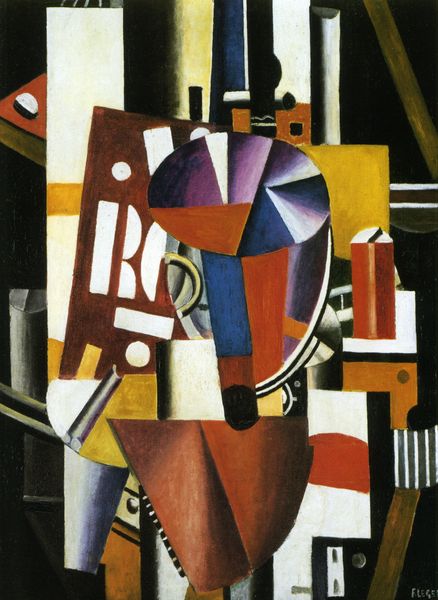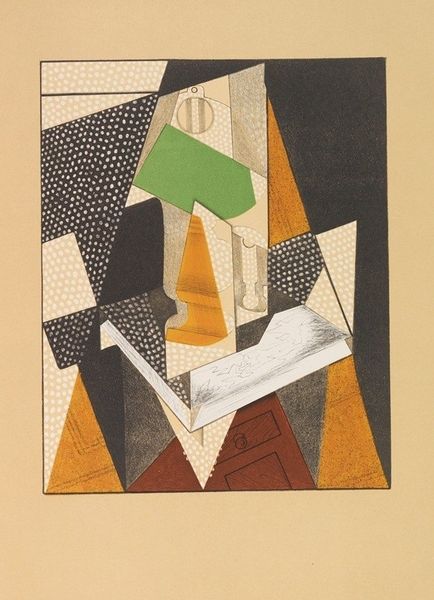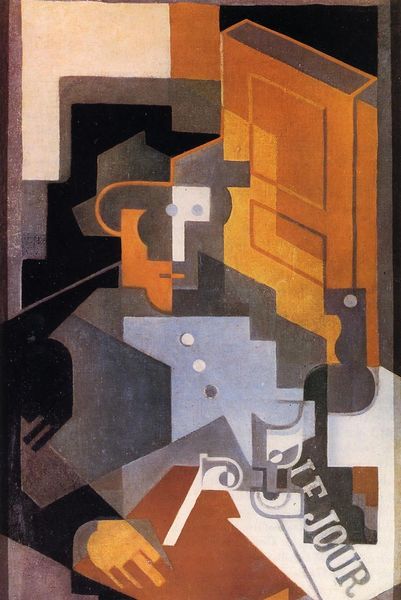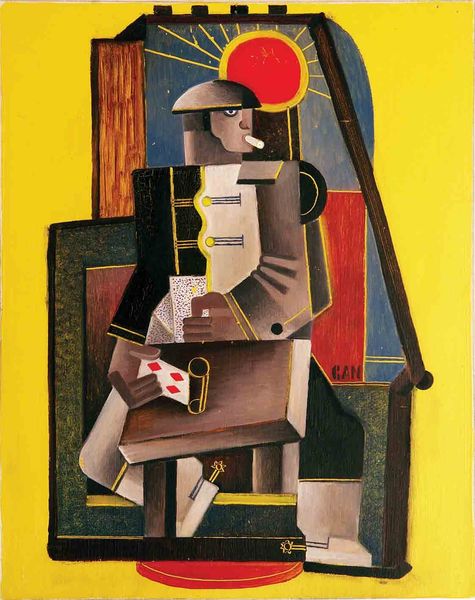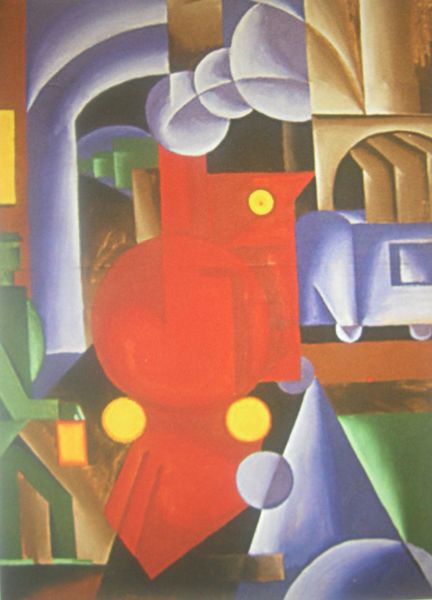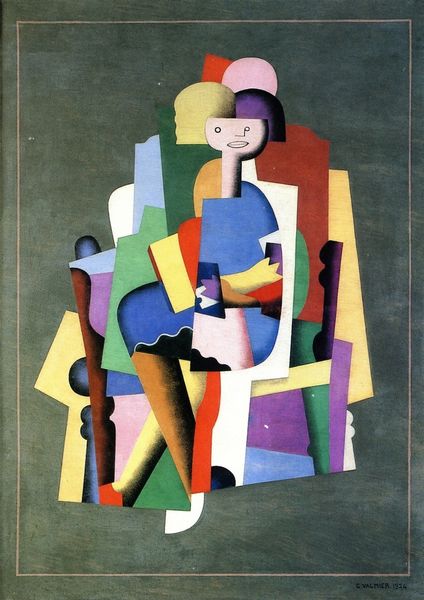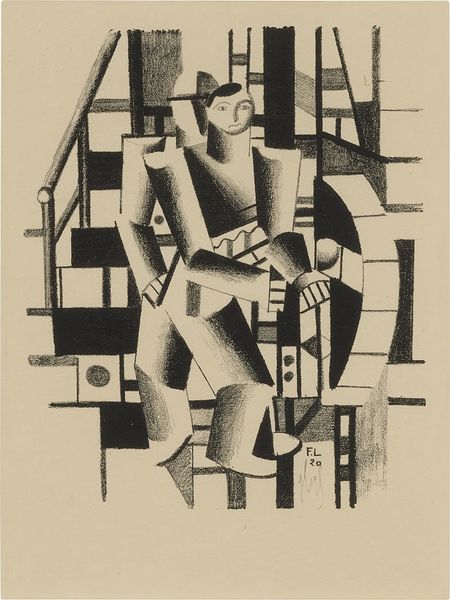
oil-paint
#
portrait
#
cubism
#
oil-paint
#
figuration
#
oil painting
#
neo expressionist
#
geometric
#
expressionism
#
portrait art
#
modernism
Copyright: Public domain US
Editor: So, this is Johannes Itten’s “Der Bachsänger (Helge Lindberg),” painted in 1916 using oil. The cubist influence is so striking, with all the geometric shapes. I’m struck by the bold use of color. What stands out to you when you look at it? Curator: Initially, the construction of pictorial space arrests the eye. Note how the planes intersect and overlap, fracturing the subject, Helge Lindberg, and his environment into discrete, geometric units. What structural relationships can we ascertain from the arrangement of these units? Editor: It seems like Itten’s broken down the figure into shapes to rebuild it, almost like a puzzle. There is the cat that seems less fragmented. It makes me think: Is there significance in what he chooses to deconstruct? Curator: Precisely. Consider the colour palette; the juxtaposition of warm and cool tones creates visual tension and a dynamic interplay across the canvas. Can we discern a symbolic or structural significance in this colour distribution, independent of its mimetic function? Does the cat ground the painting, preventing the fractured abstraction from floating away from realistic figurations? Editor: That's an interesting thought about the colour. Perhaps the warmer tones emphasize specific emotional aspects. The cat grounds the picture but also creates an expectation that is not fulfilled by the fragmented figure. Curator: Itten has created a pictorial space where the interplay between representation and abstraction challenges conventional notions of perception. What conclusions may be derived from his strategic deployment of formal elements? Editor: Looking closely, I now see the deliberate way the shapes are arranged. It’s like a deconstruction leading to a new construction on the canvas itself. Curator: Indeed. Hopefully, this examination prompts us to reflect on the artist's intent. Artworks of this complexity may lead one to challenge one’s presuppositions.
Comments
No comments
Be the first to comment and join the conversation on the ultimate creative platform.
